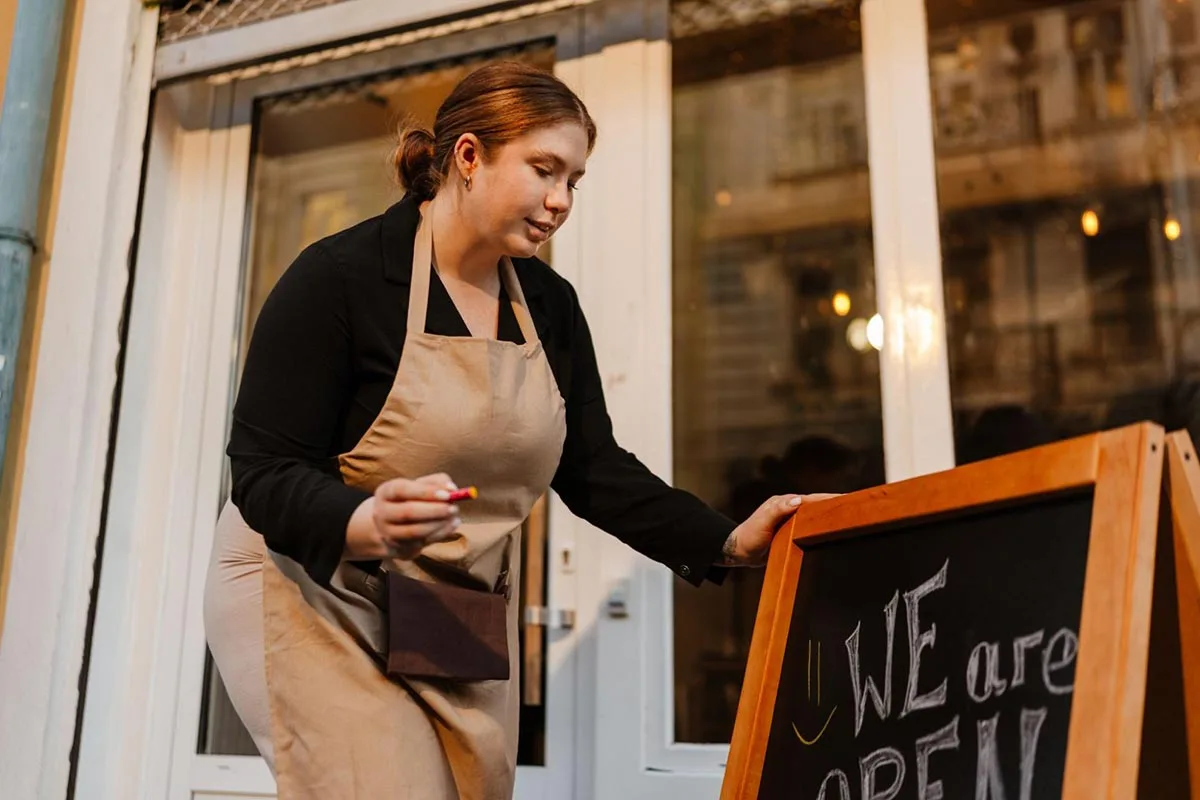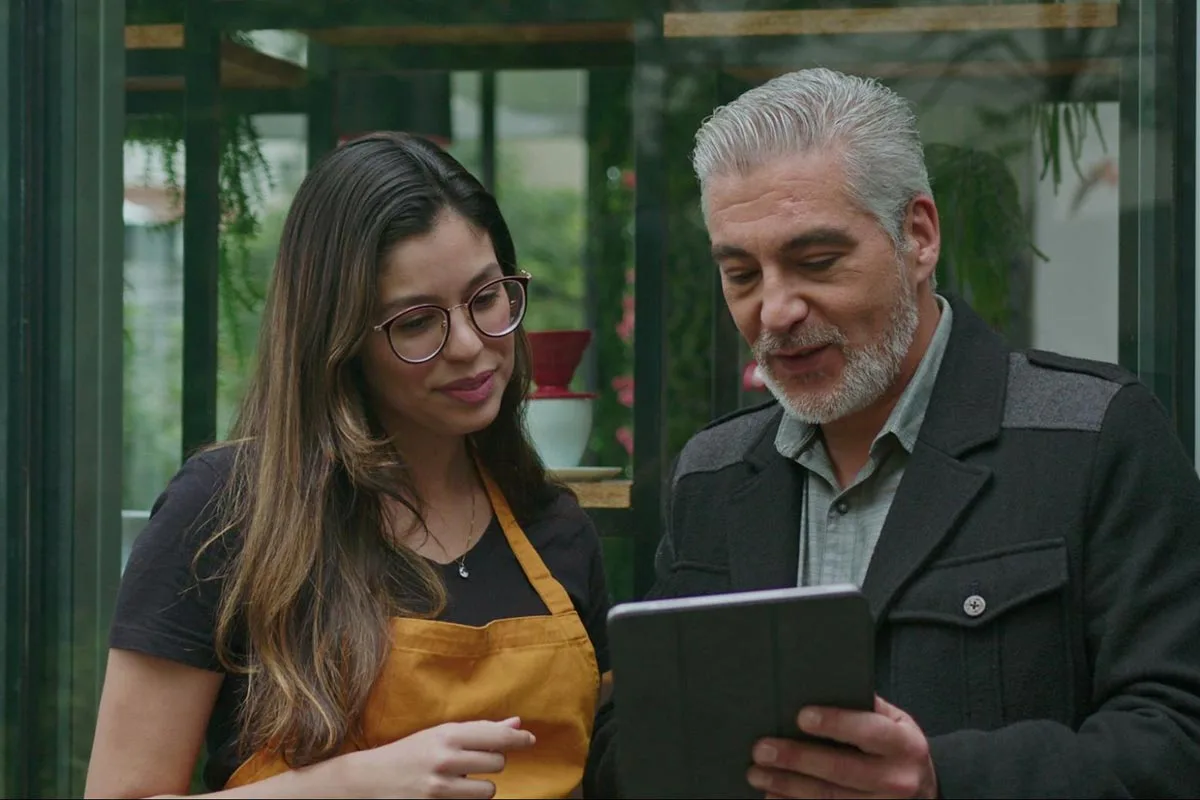How to increase foot traffic in restaurants in 6 easy steps
Skip the article and turn takeaways into action by scheduling a call with our team.
We’ve all been there at some point: Whether it’s being a tourist, being the new guy in town, or simply being unfamiliar with a neighborhood, trying to find the right restaurant as a hungry potential customer requires a lot of filters. You look for signage, for social media presence, or for word-of-mouth from other businesses or customers. Anything that elevates a restaurant above its potential competitors makes a difference for new customers. So, when you’re thinking about how to increase foot traffic in your restaurant, you need to think like the customer.
Competition for diners is fiercer than ever, so restaurant owners have to turn to creative and data-driven strategies to attract in-person customers and build a thriving local customer base. Eye-catching marketing, community engagement, and digital tools all help a restaurant stand out in a crowded market. First-time and loyal customers alike can be persuaded with solid strategies, driving repeat visits that keep restaurants in the black.
To nail a foot traffic-driving strategy, restaurant owners can focus on in-store signage, community partnerships, weekday promotions, and Yelp listing optimizations. Combining these approaches with metrics and reviews will yield the best results, turning casual visitors into loyal customers. Let’s see how this works.
1. Maximize signage impact

In a busy neighborhood, your signage is often the first impression potential customers have of your business. Well-designed, strategic signage can stop passersby in their tracks, communicate your unique value, and drive foot traffic right in the door. Whether it’s a vibrant window display or a cleverly worded chalkboard, signage is a classic and cost-effective way to catch eyes and entice diners. Here are some ways to make it work:
- Create eye-catching displays: Customers have limited attention, so attract and inform that limited attention wisely. Bold colors, clear fonts, and concise messaging on exterior signs are the way to go. You don’t have to overthink it: Imagine a chalkboard sign touting “Fresh pasta specials daily” or a neon “Happy Hour” sign with clear prices for drinks and appetizers.
- Highlight promotions: Hang signs near entrances or windows that promote limited-time offers. Signs highlighting incentives like “20% off lunch combos this week” or “Half-price draft beer with a burger or sandwich purchase” can work as an effective and cheap marketing campaign. Make sure signage is visible from at least 50 feet away so all passersby can see it.
- Use call-to-action language: Phrases like “Taste our new summer menu!” or “Join us for happy hour!” encourage customers to make up their mind immediately. Further using QR codes to link to your menu or your Yelp page can further drive engagement.
- Keep it fresh: Change up your signage at least weekly so customers that regularly pass by sense the novelty. Highlight seasonal dishes, special offers, local events, or trending menu items. Keeping jokes fresh can draw attention—see how El Arroyo in Austin, Texas does it.
Tip: Hire a professional graphic designer for at least one standout exterior sign, with a budget of a few hundred to low-thousands of dollars. Most interior signs can be done for free with template-based tools like Canva.
2. Build community partnerships

Restaurants that are part of the fabric of their local community thrive more than those who go it all alone. Building relationships with local businesses or other organizations can boost visibility, attract new customers, and build a true sense of community among locals. These collaborations usually end up as a win-win, with businesses on both ends of the partnership benefiting.
Some ways to start:
- Team up with local businesses for cross-promotions: These could be nearby gyms, offices, or retail shops—anywhere your customers might visit. Team up to offer exclusive discounts or coupons that customers of each business can use at the others. For example, offer a 10% off discount to gym members from a partner gym, while the gym can offer a 10% monthly discount coupon to your customers. Set up flyers at your local partners’ businesses.
- Set up booths at local events: Community festivals, county fairs, and farmers markets are all great opportunities to boost your visibility. Set up booths or pop-up events there to get the word out and let customers taste your wares.
- Sponsor sports teams: Consider sponsoring local sports teams like a little league team or an adult softball league, with your logo on the jersey. Offer discounts to these teams so they’re sure to visit your restaurant after their games.
- Host events: Hosting special events like live music, cooking classes, trivia nights, or any other events your target demographic is into can make your restaurant a key social hub.
- Partner with influencers: Local social media influencers, especially of the foodie variety, can be a big plus to restaurants. Businesses make on average $6.50 for every $1 spent working with influencers—a significant return on investment for this marketing strategy!
Tip: If you already have friends running businesses within a 5-mile radius you’d like to work with, talk to them first about cross-promotions. Otherwise, look for 2-3 businesses you’d like to work with and propose cross-promotion deals. To see what’s effective, use unique discount codes to track referral traffic from your partners.
3. Launch weekday promotions

Weekdays—especially Monday-Wednesday—are often the doldrums of the week for restaurants. So, wise restaurant owners can turn to strategic promotions to get people in seats and turn slow days into busy ones. Incentives tailored to local workers, families, or those on a budget can help build a steady stream of midweek customers. Some ideas to make weekdays pop:
- Promote happy hour specials: Happy hour promos like discounted drinks and appetizers from 3-6 p.m., for example, will attract after-work crowds (and potentially remote workers). Push these on social media and your store signage to maximize impact.
- Launch lunch deals: Many customers are looking for affordable lunch combos (or prix fixe deals for more upscale restaurants), which especially appeal to nearby workers. Use limited-time offers, e.g., “Lunch special: 11 a.m.-2 p.m. only” to drive urgency.
- Offer customer loyalty incentives: Loyalty programs can shine during the weekdays, making full regulars out of customers. Specials like “Buy 5 weekday lunches, get 1 free” can encourage everyday dining.
- Host themed nights: Taco Tuesday and Wine Wednesday are tried-and-true concepts, and these ideas can be reshaped to fit any restaurant. Unique menus and discounts on certain days keep things interesting for both customers and staff.
- Rotate your menu: Keep customers curious by having a core of some popular menu items while rotating other new ones. Those who have worked their way through your menu will have reason to come back and try your new offerings.
Tip: Launch one weekday promotion within 10 days of reading this, even if it’s just a special price on appetizers or drinks. Track its success by monitoring sales data and customer reviews on Yelp.
4. Optimize your Yelp listing

Your Yelp page is one of the most powerful tools to drive restaurant foot traffic. A whopping 76 million individual users visit Yelp every month, so optimizing your listing is key to capturing local diners—especially those using the “near me” searches. A polished, keyword-rich Yelp page can boost your visibility, attract clicks, and convert browsers into customers. Fine-tune your profile and find out why Yelp is one of the best allies of the restaurant business. To get the most of your page:
- Make sure your profile is complete: Review your profile to ensure it includes accurate hours, location, contact information like your phone number, your restaurant website, and high-quality photos of your food and establishment. A complete profile ranks higher in search results and builds customer trust.
- Use relevant keywords: Search engine optimization (SEO) tactics are valuable on Yelp as well as the web in general. Include location-specific keywords in your business description, like “Italian restaurant in (city name)” or “Downtown (city name) pizza.” This helps improve your ranking in “near me” searches.
- Add attributes: Highlight features like “ outdoor seating,” “vegan options,” or “pet-friendly” to attract specific audiences. Update these regularly should anything change.
- Encourage check-ins: Place placards on tables encouraging customers to check in on Yelp, as check-ins can boost a restaurant’s visibility. Check-ins can be rewarded with something small like a free dessert.
- Respond to reviews: Customers regularly read reviews for restaurants they’re considering, so take the time to respond to both negative and positive reviews. Reviews help prepare a customer’s mind for the dining experience they should expect.
Tip: Conduct an audit of your Yelp listing within 48 hours of reading this. Add 5-10 high-quality photos, check your attributes, and add more keywords where possible.
5. Tap into Yelp metrics and reviews

The guesswork is gone: The restaurant industry now has the ability to dive into all the metrics and customer insights that used to be lost somewhere in the ether. Analyzing metrics and customer reviews helps understand the customer experience, and from there, restaurant owners can further consider how to increase foot traffic in their restaurant.
Some ways to use Yelp effectively:
- Monitor key metrics: Track page views, customer leads (calls, website clicks), and check-ins via Yelp.
- Track review trends: Look for patterns in reviews like praise for specific dishes or complaints about slow service. Use this to further refine your menu, service, or promotions. If customers rave about your happy hour, extend it and promote it on social media.
- Track campaign impact: After launching a promotion or event, check Yelp metrics for increases in page views, check-ins, or reviews.
Tip: If you haven’t yet, set up a Yelp for Business account. Check your metrics weekly and respond to at least 3 reviews per week to boost engagement and trust.
6. Discover Yelp Guest Manager

Combining the above strategies with Yelp Guest Manager is a strategic move. Guest Manager provides a heavy dose of both customer-facing marketing strategies and restaurant-facing front-of-house (FOH) tools. Customers get the benefit of Guest Manager’s top-notch reservation and waitlist system, while FOH staff can enjoy the automation of many systems, allowing them to usher more foot traffic in the door.
Guest Manager makes FOH service efficient as possible, helping drive table turnover to seat more guests: 86% of restaurants say Guest Manager streamlines their FOH.
Guest Manager’s waitlist is on point with timing, keeping walk-in customers in the know: It quotes wait times with up to 92% accuracy.
What’s more, plentiful data gives restaurant owners the insights they need to track the success of their marketing, seeing what’s working and what’s not without having to waste time reading spreadsheets. Want to see what your most effective weekday promo is? Just check your longitudinal sales data.
We’d love to show you how all this works, and how it can increase foot traffic in a restaurant. Give us a shout for a demo—we love walk-in customers, too.